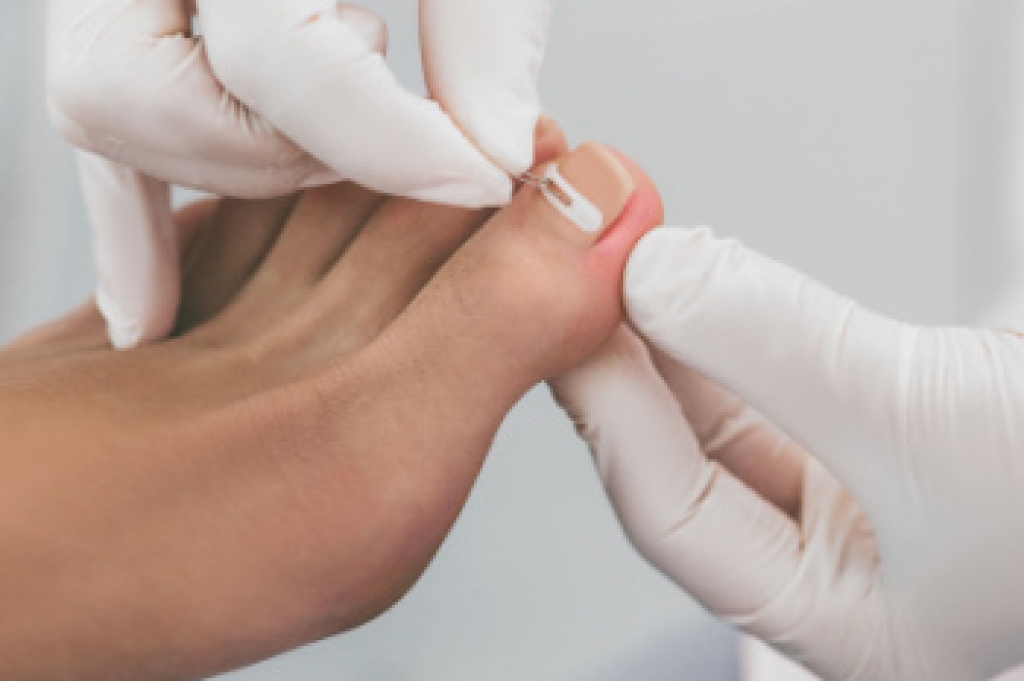
An ingrown toenail occurs when the edge of the toenail grows into the surrounding skin, leading to pain, inflammation, and potential infection. There are different types of ingrown toenails, including those caused by improper nail trimming, wearing tight-fitting shoes, or genetic predisposition. Additionally, trauma to the toe or fungal infections can cause an ingrown toenail to develop. The most common type involves the toenail growing into the skin at the sides of the nail bed, often resulting from cutting nails too short or rounding the edges. Alternatively, a pincer nail may develop, where the sides of the nail curve inward, putting pressure on the skin. Ingrown toenails can also result from wearing shoes that crowd the toes or participating in activities that put repetitive pressure on the feet. Understanding the causes and types of ingrown toenails is essential for prevention and prompt treatment. If you have an ingrown toenail, it is suggested that you visit a podiatrist sooner rather than later. This type of doctor can successfully treat this condition and offer you effective prevention tips.
Ingrown toenails may initially present themselves as a minor discomfort, but they may progress into an infection in the skin without proper treatment. For more information about ingrown toenails, contact one of our podiatrists of Mercer Ocean Podiatry. Our doctor can provide the care you need to keep you pain-free and on your feet.
Ingrown Toenails
Ingrown toenails are caused when the corner or side of a toenail grows into the soft flesh surrounding it. They often result in redness, swelling, pain, and in some cases, infection. This condition typically affects the big toe and may recur if it is not treated properly.
Causes
- Improper toenail trimming
- Genetics
- Improper shoe fitting
- Injury from pedicures or nail picking
- Abnormal gait
- Poor hygiene
You are more likely to develop an ingrown toenail if you are obese, have diabetes, arthritis, or have any fungal infection in your nails. Additionally, people who have foot or toe deformities are at a higher risk of developing an ingrown toenail.
Symptoms
Some symptoms of ingrown toenails are redness, swelling, and pain. In rare cases, there may be a yellowish drainage coming from the nail.
Treatment
Ignoring an ingrown toenail can have serious complications. Infections of the nail border can progress to a deeper soft-tissue infection, which can then turn into a bone infection. You should always speak with your podiatrist if you suspect you have an ingrown toenail, especially if you have diabetes or poor circulation.
If you have any questions, please feel free to contact our office located in Toms River, NJ . We offer the newest diagnostic and treatment technologies for all your foot care needs.
